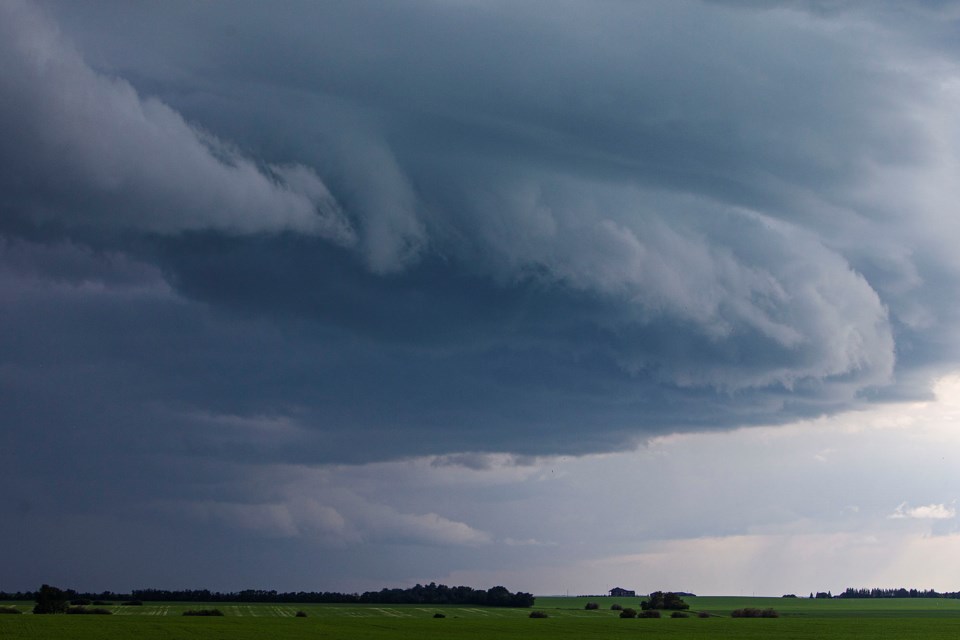Some readers have invoked Donald Trump's favourite catchphrase and accused the St. Albert Gazette of being the purveyor of fake news.
"Apparently the definition of "dry" has changed since I was in school. I was under the misconception that "dry" meant lacking moisture," wrote Cathy Candy on the Gazette's St. Albert Today Facebook page.
"FAKE NEWS. My garden is full of mildew, should have planted rice. Lol," Shannon Cloutier chimed in.
And so it went. This, after the shocking story in last Wednesday's Gazette (July 17) that July has actually been dry compared to historical norms.
Dry? What dry? Temperatures were cooler, and on average every second day in July produced a range from overcast skies spitting droplets to hour-long torrential bursts that flooded streets.
A couple of days after the Gazette story took it on the chin in social media (although the story, believe it or not, was accurate), the City of St. Albert released a tweet during the subsequent downpours: “Due to the significant rainfall we experienced Friday (July 20) afternoon, low lying areas within our trail system have been flooded. Crews have closed any flooded sections. Please be cautious and obey all signage. #stalbert.”
So why was Environment Canada and Climate Change telling the Gazette the region was trailing when it comes to average rainfall?
Our July 17 story reported 37 mm of rain falling during the first 15 days of July, as explained to us by Natalie Hasell, a warning preparedness meteorologist. But our eyes provided conflicting data, and there’s a chance we were right.
It turns out that precipitation is measured by a rain gauge, an open cylinder with a mechanism to automatically record rainfall. At most stations, gauges are a standard size of 10 inches, about the size of a large pie plate.
“It doesn’t detect water one metre away or 10 metres away or 100 metres away. It only detects it in that spot,” said Dan Kulak, also a warning preparedness meteorologist for Environment Canada.
The two closest detection stations to St. Albert providing complete information are Edmonton Blatchford operated by Environment Canada and St. Albert Research Station about two kilometres north of the city core. The province of Alberta operates the rural station.
“As the crow flies, the stations are about 15 kilometres apart and it’s quite possible to have variations,” Kulak said. No kidding.
Since our July 17 report, we’ve had a couple of good dumps of rain. Environment Canada reports that as of July 22, Edmonton Blatchford reports 130 mm and St. Albert Research Station reads at 90.2 mm.
The average July reading is 95.6. We’re already up there and there’s one week to go. Any bets we’ll surpass the average or maybe even set a new record?




